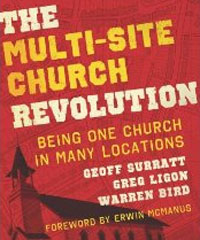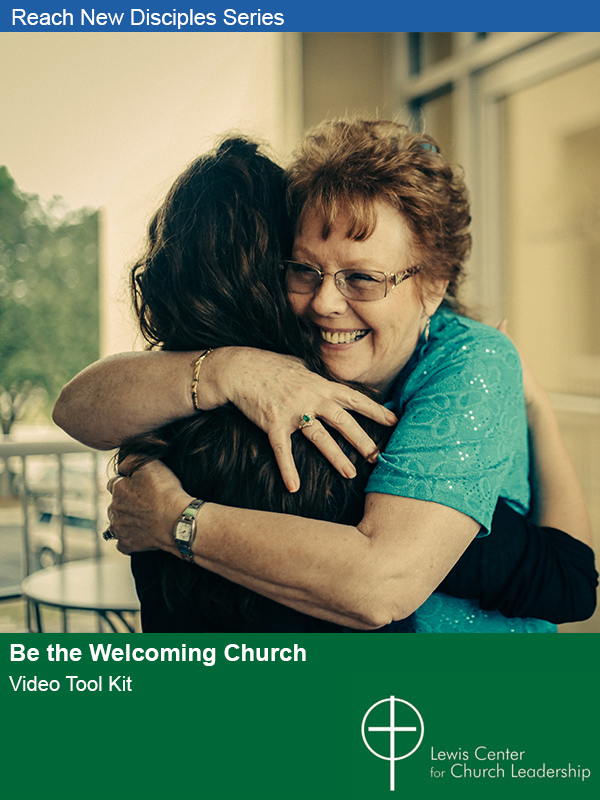The multi-site church approach is not a new one, but one that is rapidly growing in appeal, according to the authors of The Multi-Site Church Revolution. The revolution is not in the church’s desire to reach people for Christ, but in the variety of methods congregations employ to reach beyond their walls. For multi-site churches, geography is no longer the defining factor in which church only happens on Sunday morning in the church sanctuary in the church building. What is revolutionary about the multi-site church is its ability to grow beyond the limitations of one service in one building, connecting multiple congregations that share a common vision, budget, leadership, and board.
These authors explore several models, including satellite campuses that offer their own complete worship experience, video-linked worship sites using recorded or live-broadcast sermons from the mother church, team teaching in multiple locations, and partnerships with para-church or nonprofit organizations.
The multi-site church brings a shared worship experience to such varied locations as partner churches, shopping malls, nursing homes, or wherever people sharing a common vision gather. Approaches to multi-site ministry vary widely. These authors explore several models, including satellite campuses that offer their own complete worship experience, video-linked worship sites using recorded or live-broadcast sermons from the mother church, team teaching in multiple locations, and partnerships with para-church or nonprofit organizations.
The authors report that most churches with a multi-site approach evolve into the practice. One church outgrew its worship space but could not afford to build a new one. So becoming a multi-site church allowed its pastor to preach as usual on Saturday night and offer the videotaped sermon at a variety of venues on Sunday morning, where live music and on-site worship leaders enhance the experience. Another church broadcasts its worship services live to a sister church across town and across the world in Thailand. Another wanted to bring church services to local firefighters, who could not leave the station house on Sunday mornings. A personalized DVD provided a copy of the sermon, a bulletin, and an introduction to the message, connecting the firefighters to the  community in a way a nationally televised worship service could not. In each case, these churches saw opportunity where others saw obstacles and chose to believe in the “genius of the and.”
community in a way a nationally televised worship service could not. In each case, these churches saw opportunity where others saw obstacles and chose to believe in the “genius of the and.”
Emphasizing that multi-site ministry is not a vision in itself but a vehicle to achieve a vision, the book is a guide for any church interested in learning more about the growing trend of church “outside the box.” Definitions of key terms and phrases help the reader, as well as models for multi-site churches, risk levels, and conditions for consideration. Self-diagnostic tools are found throughout the chapters, along with sample checklists, directories, and detours to avoid. The multi-site approach is not for every church, but many of the possibilities described are within the realm of possibility for many churches that may not think this kind of outreach is feasible. The book is a helpful resource in evaluating whether a multi-site strategy is right for your church.
The Multi-Site Church Revolution can be purchased at Cokesbury and Amazon.com.







